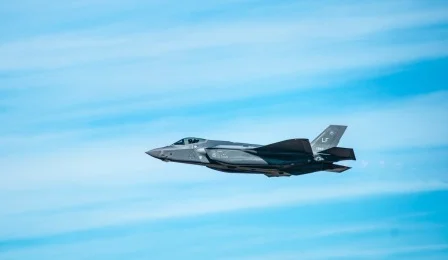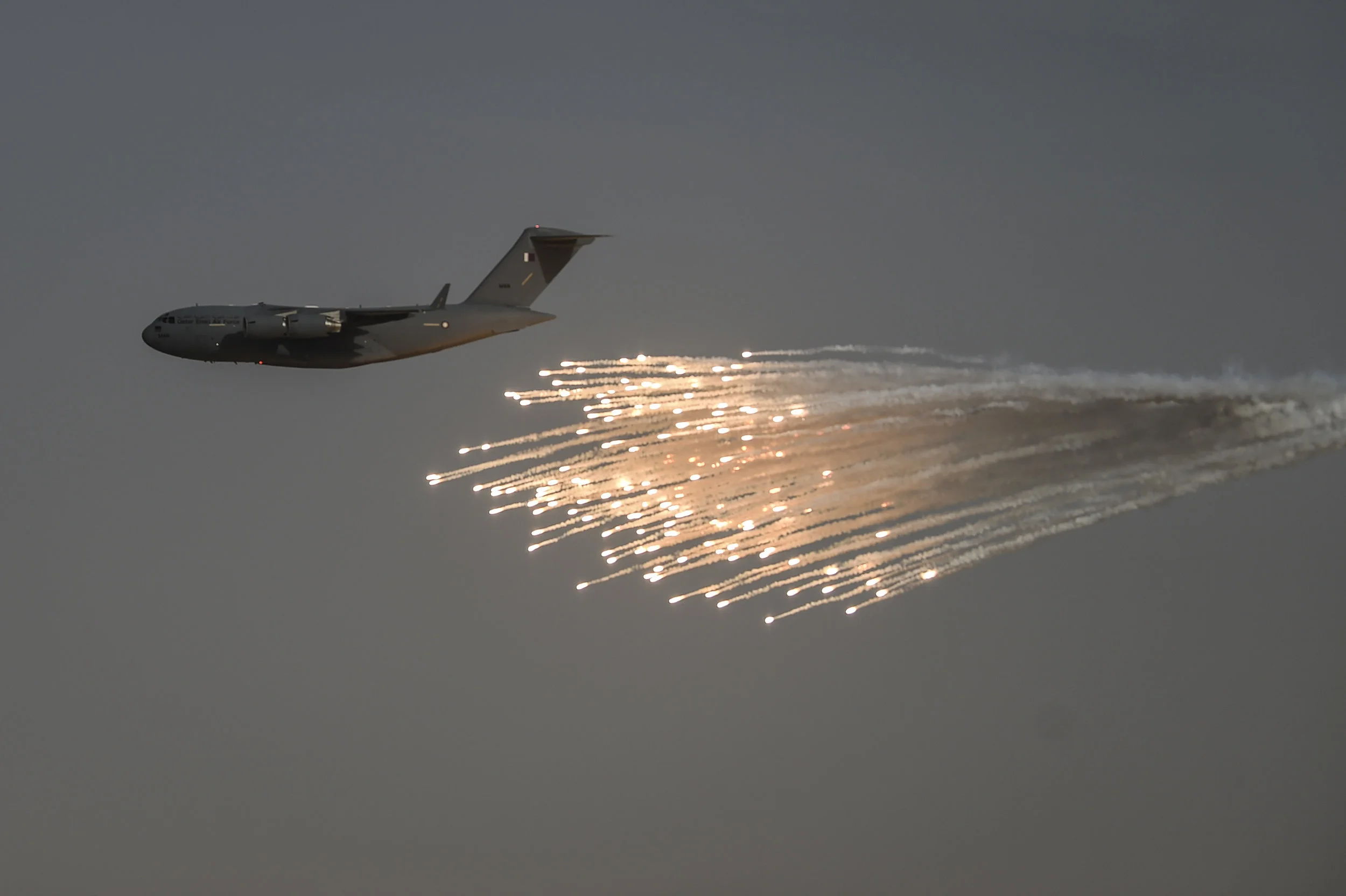Air Force Mission and Vision
The United States Air Force is a trusted and reliable joint partner with the sister services known for integrity in all of it’s activities, including supporting the joint mission first and foremost. The U.S. Air Force excel as stewards of all Air Force resources in service to the American people, while providing precise and reliable Global Vigilance, Reach and Power for the Nation.
The U.S. Air Force is the world’s preeminent force in air, space and cyberspace. We maintain that distinction by maintaining our objective of global vigilance, reach and power and remaining true to our vision statement: The World’s Greatest Air Force—Powered by Airmen, Fueled by Innovation. Through shared values, key capabilities and upholding our Airman’s Creed, we continue to achieve our mission and aim high in all we do.
Air Force Mission
To fly, fight and win … in air, space and cyberspace.
AIRMAN’S CREED
We share an unbreakable trust and the will to never give up. The Airman’s Creed is our promise to country and colleagues.
I AM AN AMERICAN AIRMAN.
I AM A WARRIOR.
I HAVE ANSWERED MY NATION’S CALL.
I AM AN AMERICAN AIRMAN.
MY MISSION IS TO FLY, FIGHT, AND WIN.
I AM FAITHFUL TO A PROUD HERITAGE,
A TRADITION OF HONOR,
AND A LEGACY OF VALOR.
I AM AN AMERICAN AIRMAN.
GUARDIAN OF FREEDOM AND JUSTICE,
MY NATION’S SWORD AND SHIELD,
ITS SENTRY AND AVENGER.
I DEFEND MY COUNTRY WITH MY LIFE.
I AM AN AMERICAN AIRMAN.
WINGMAN, LEADER, WARRIOR.
I WILL NEVER LEAVE AN AIRMAN BEHIND,
I WILL NEVER FALTER,
AND I WILL NOT FAIL.
INTEGRITY FIRST
An Airman is a person of integrity, courage and conviction. They must be willing to control their impulses and exercise courage, honesty and accountability in order to do what is right even when no one is looking.
SERVICE BEFORE SELF
An Airman’s professional duties take precedence over personal desires. Every Airman is expected to have the discipline to follow rules, exhibit self-control and possess respect for the beliefs, authority and worth of others.
EXCELLENCE IN ALL WE DO
An Airman strives for continual improvement in self and service in order to propel the Air Force further and to achieve greater accomplishment and performance for themselves and their community.
US Air Force Key Capabilities
Develop Airmen, technology for war fighting and integrating operations with a focus on six key capabilities.
AIR AND SPACE SUPERIORITY
Continually build distinctive capabilities that enable joint forces to dominate enemy operations in all dimensions: land, sea, air and space.
Photo courtesy of US Air Force.
GLOBAL PRESENCE
Pursue technological advances that allow us to attack anywhere, anytime, more quickly and with greater precision than ever before.
RAPID GLOBAL MOBILITY
Maintain and improve our ability to respond quickly and decisively anywhere we’re needed around the globe.
PRECISION ENGAGEMENT
Hone the application of selective force against specific targets, advancing the reliable use of military power with minimal risk or collateral damage.
INFORMATION SUPERIORITY
US Air Force Thunderbirds fly over KC-10 from the 9th Air Refueling Squadron “Gucci’s” Travis AFB. Photo D. Swock.
Advance data capabilities that allow joint force commanders to keep pace with information and incorporate it into a campaign’s plans.
AGILE COMBAT SUPPORT
Offer expert combat support across deployment and sustainment, including all permanently based and expeditionary forces.
The Air Force Song
Off we go into the wild blue yonder,
Climbing high into the sun;
Here they come zooming to meet our thunder,
At 'em, boys, Give 'er the gun! (Give 'er the gun now!)
Down we dive, spouting our flame from under,
Off with one helluva roar!
We live in fame or go down in flame. Hey!
Nothing will stop the U.S. Air Force!
56th Fighter Wing History
The 56th Fighter Wing, one of the most highly decorated aviation units in history, traces its heritage to the 56th Pursuit Group, which first activated on 15 January 1941 at Savannah Air Base, Georgia. Re-designated a fighter group, the unit was equipped with the P-47 Thunderbolt and then reassigned to England. On 13 April 1943, the 56th flew its first combat mission of World War II. During its two-year involvement in the air war in Europe, the group shot down 667 enemy aircraft, more than any other group in the theater. It damaged or destroyed a total of 1,598.5 enemy aircraft. In the process, the 56th only lost 25 pilots in aerial combat while producing 40 fighter aces. After World War II, the 56th Fighter Group was assigned at Selfridge Field, Michigan. On 15 August 1947, the 56th Fighter Wing was activated with the group as a subordinate unit. The wing's mission was air defense. The unit wrote another chapter in aviation history when on 14 July 1948 its F-80 Shooting Stars made the first ever west-to-east crossing of the Atlantic by military jet fighters. That flight was a month after the Soviets set up their blockade of Berlin, and put the Soviets on notice that the United States was capable of deploying a large package of modern military aircraft across the Atlantic in minimum time. The wing was inactivated on 1 January 1964. On 16 March 1967, the wing reactivated as 56th Air Commando Wing at Nakhon Phanom Royal Thai Air Force Base (AFB), Thailand. On 1 August 1968, it was re-designated as the 56th Special Operations Wing. The 56th trained Laotian and Thai Air Force personnel, and supported and conducted combat operations against opposing armed enemy forces. It played a major part in trying to win the hearts and minds of the population with its Civic Action Section. It took part in search and rescue, and suppression of enemy defenses missions. As such, it took part in the Battles for Khe San and Lima Site 85, as well as the rescue raid on Son Tay prisoner of war camp and the attempted to rescue of the crew of the United States merchant container ship SS Mayaguez. Renamed on 30 June 1975, and reassigned to MacDill AFB, Florida, the 56th Tactical Fighter Wing conducted combat aircrew training in F-4s and later fighter training in F-16s. In the early 1990’s, USAF downsized which removed fighter aircraft from MacDill AFB. The renamed 56th Fighter Wing remained in the active fighter force. On 1 April 1994, the wing was reassigned to Luke AFB, Arizona, flying F-16s and the F-15E Strike Eagle. A year later the F-15E training mission moved to Seymour Johnson AFB, North Carolina. On 10 March 2014, the wing received its first F-35A aircraft. Today, the 56th Fighter Wing, a unit which historically had some of the world’s greatest fighter pilots, continues the mission that has been identified with Luke AFB since 1941: “Train the world’s greatest F-35 and F-16 fighter pilots.”
US Air Force aircraft, weapons, organizations, inventory, careers and equipment database.
Check the US Air Force database which holds fact sheets on Air Force weapons, organizations, inventory, careers and equipment. Air Force fact sheets contain up to date information and statistics.
Photo courtesy of US Air Force





